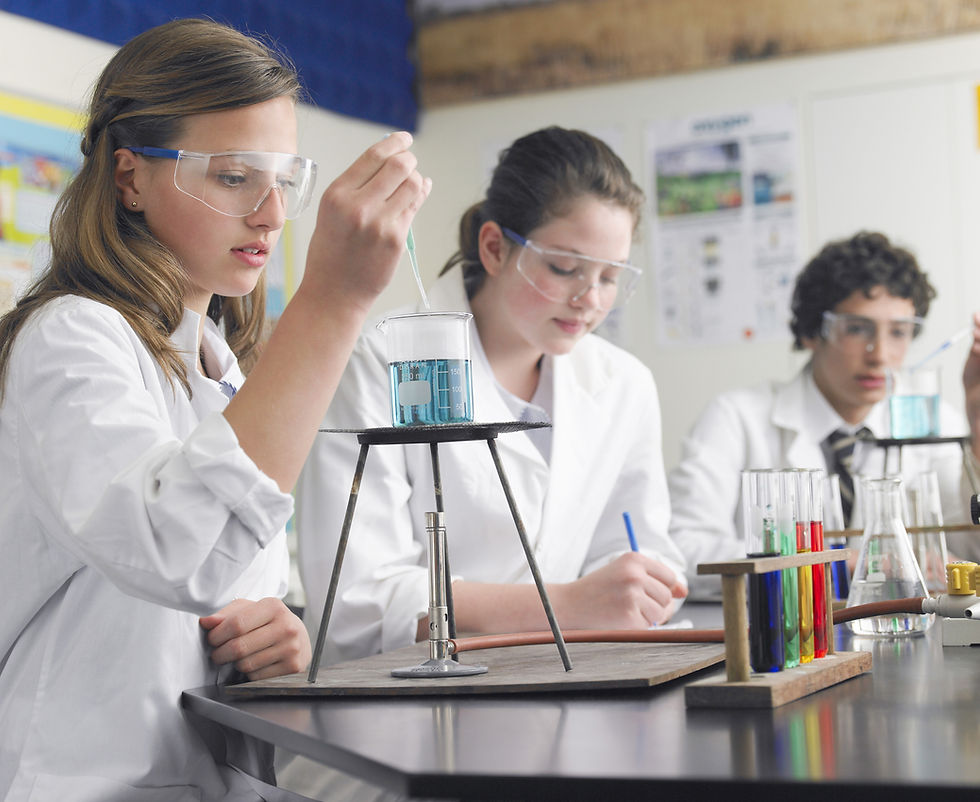Introduction
In education, there's a transformation underway—one that centers hands-on learning experiences over traditional textbook-based approaches. And microschools are leading this revolutionary shift.
While the value of hands-on learning experiences for students is well established (see Holstermann et al and Schwichow et al), we are just starting to understand the transdisciplinary ripple effects that hands-on science offers; including positive outcomes for both reading and reading comprehension.
Exploring the Unpredictable World of Science
As anyone who has studied science will tell you, do not expect order and consistency. Rather, messiness and unpredictability are the name of the game.
QuantumCamp (QC) courses allow students to witness firsthand the dynamic nature of scientific exploration. For example, in one experiment students burn iron metal, in the form of steel wool, and are challenged to explain a mass change that defies intuition! In another, they try to figure out why reacting magnesium with hydrochloric acid produces combustible hydrogen gas, but reacting copper with the same acid produces nothing. Students walk away from these lab experiences empowered and curious to deepen their understanding of the world around them as opposed to simply checking a fact or skill off of a list of standards.
Developing Critical Thinking, Problem-Solving, and Collaborative Communication
In any academic program, predetermined outcomes stifle creativity. If a student knows there is one right answer that the teacher is looking for, the pursuit of actual learning is corrupted! Hands-on science is a natural antidote to this problem. By its very nature, it encourages students to ask questions, make predictions, and run experiments. It nurtures a spirit of inquiry and innovation.
Even further, hands-on science fosters collaboration and communication—an essential aspect of both academic and professional success. When students run labs in groups and collectively make sense of the results, they are forced to learn to collaborate, share ideas, and articulate their findings effectively! These interpersonal skills are invaluable in preparing students for the ever-changing, unpredictable landscape of the future of work.
Connecting Theory with Practice
When concepts are presented in isolation and abstracted from real-world applications, students struggle to see the relevance of what they’re learning. Boredom takes hold and learning retention suffers. Hands-on science bridges the gap between theory and practice as it seamlessly integrates abstract concepts with real-world applications. Therefore, learning becomes meaningful and most importantly—sticky. By witnessing the relevance of scientific principles in everyday phenomena, students develop a deeper appreciation for the subject and its implications in the world around them.
The Reading Wars
Reading, and specifically the way it’s taught has been a flashpoint in recent American educational dialogue; even hitting the mainstream in the form of a popular podcast. But a recent article from The Heckinger Report shines new light on other, less obvious ways to boost kids’ reading comprehension—hands-on science.
A recent study highlights the causal evidence that building background knowledge can translate to higher reading achievement. In the study, children were randomly selected to receive a specialized three-year knowledge-building curriculum focused on hands-on science and social studies or a standard textbook-based learning approach to both subjects.
While COVID cut the planned 3-year experiment short, the results were clear. Students who received the hands-on learning approach outperformed those who didn’t. That performance gap remained a year later after the knowledge-building program had ended. It’s also worth noting that math scores showed a similar improvement in reading scores in the hands-on group. Researchers feel this unexpected boost may be due to word-problem-heavy math testing as well as that the hands-on learning approach also tangentially teaches patterns. And once a student is familiar with the template, a new topic more easily overlays their existing knowledge.
Conclusion
Hands-on science is not just a teaching tool; it's a transformative educational experience that empowers students to become active participants in their own learning. By embracing the messiness of scientific exploration, fostering curiosity and creativity, developing critical thinking and problem-solving skills, and promoting collaboration and communication, hands-on science prepares students for success in an ever-changing world. If you’re looking to embrace this immersive approach to learning and unlock potential scientists, innovators, and leaders, let’s talk.


Comentários